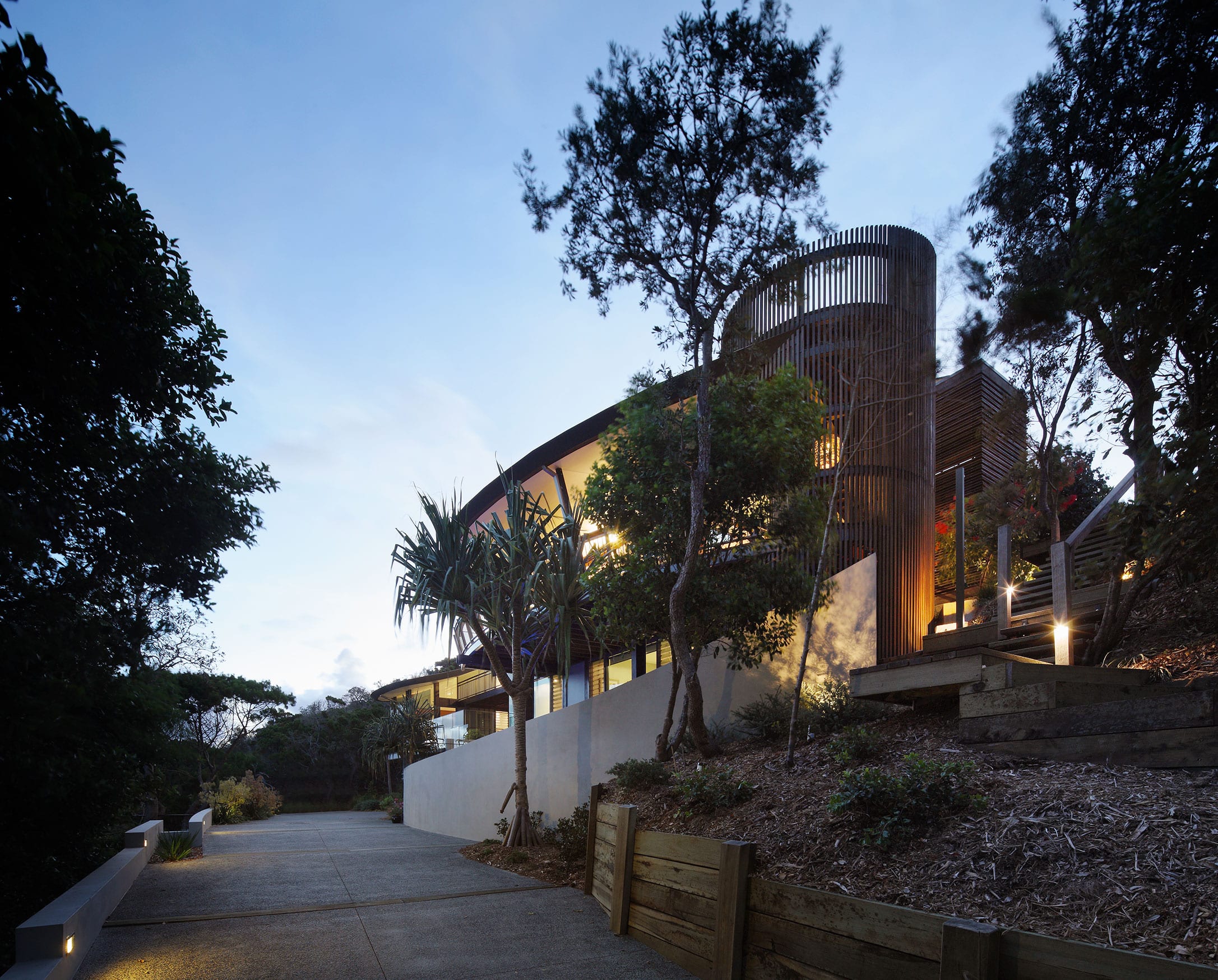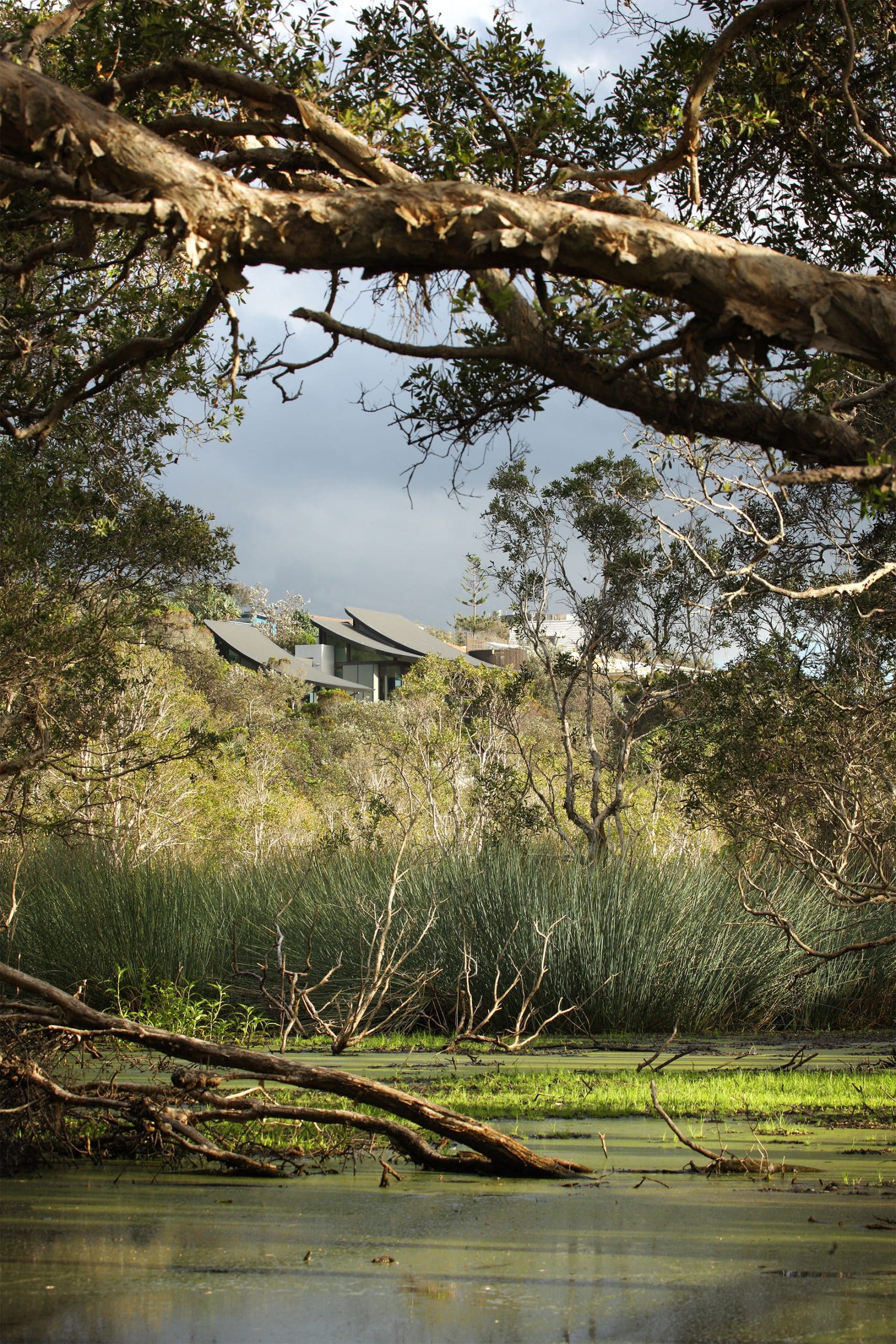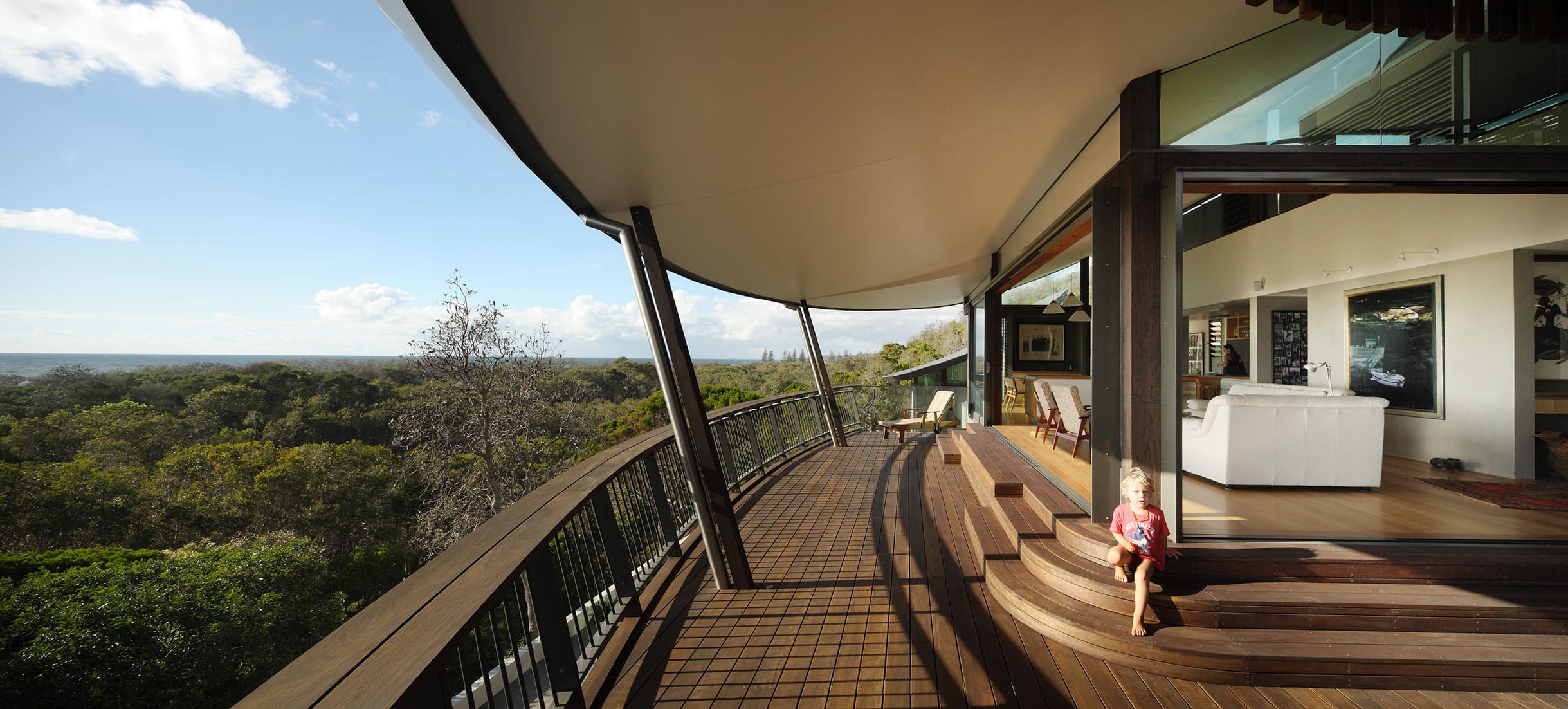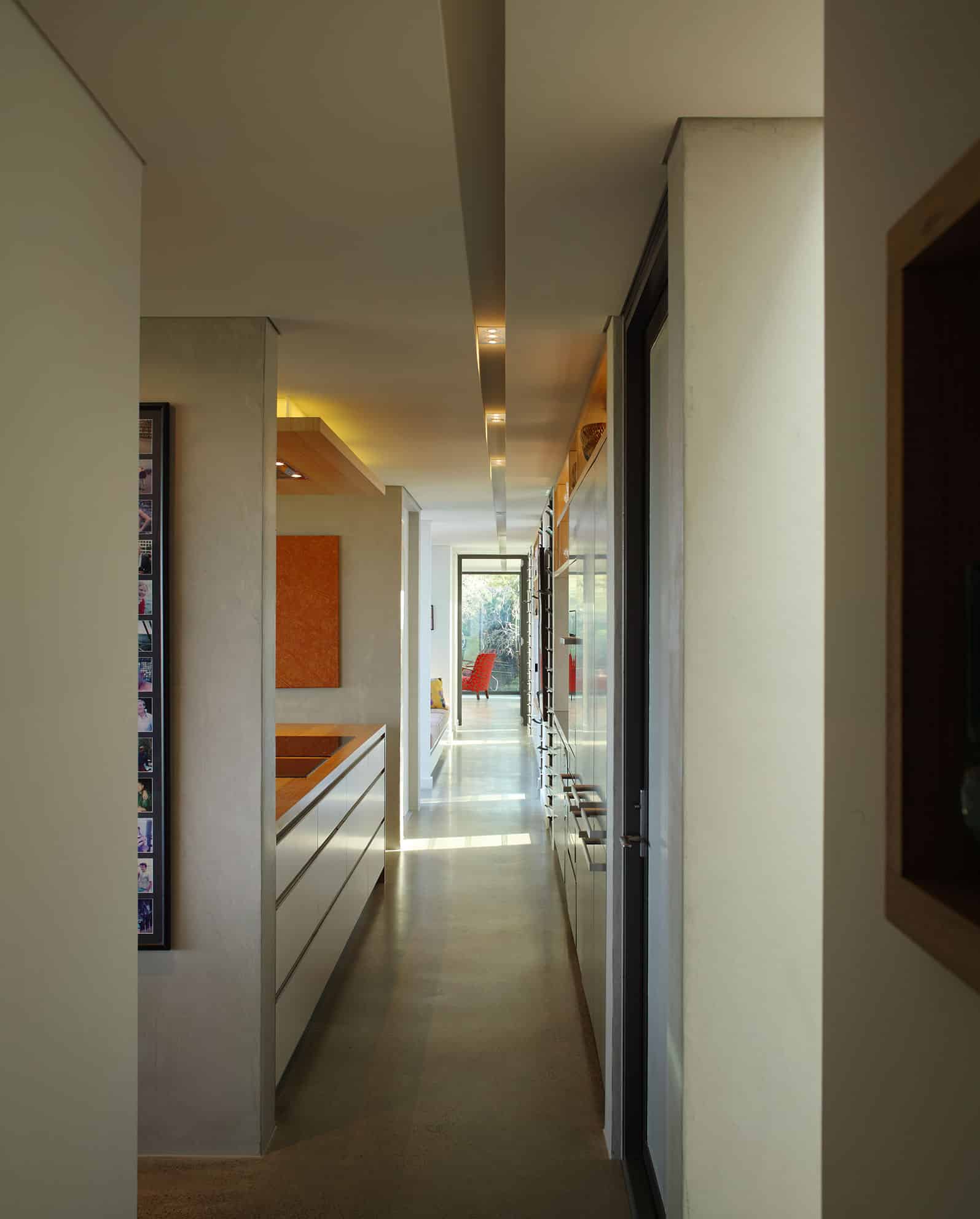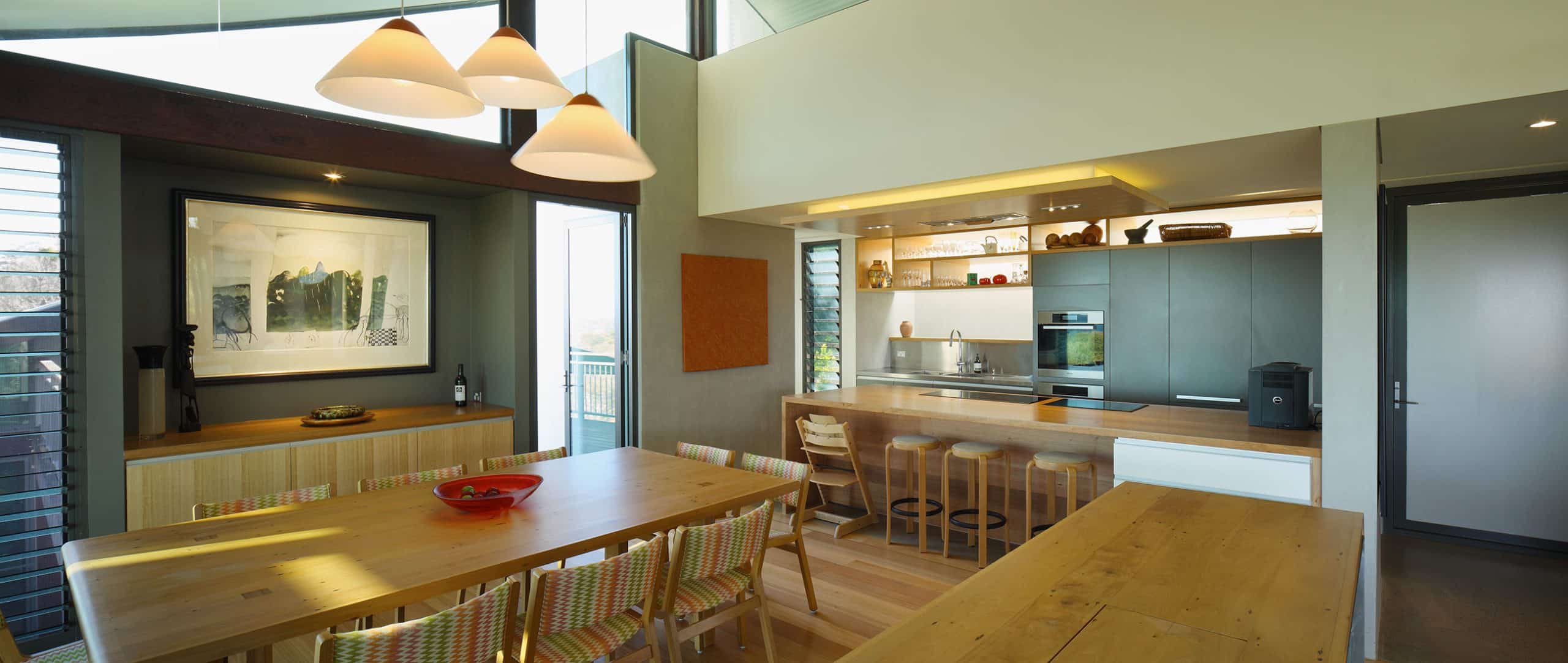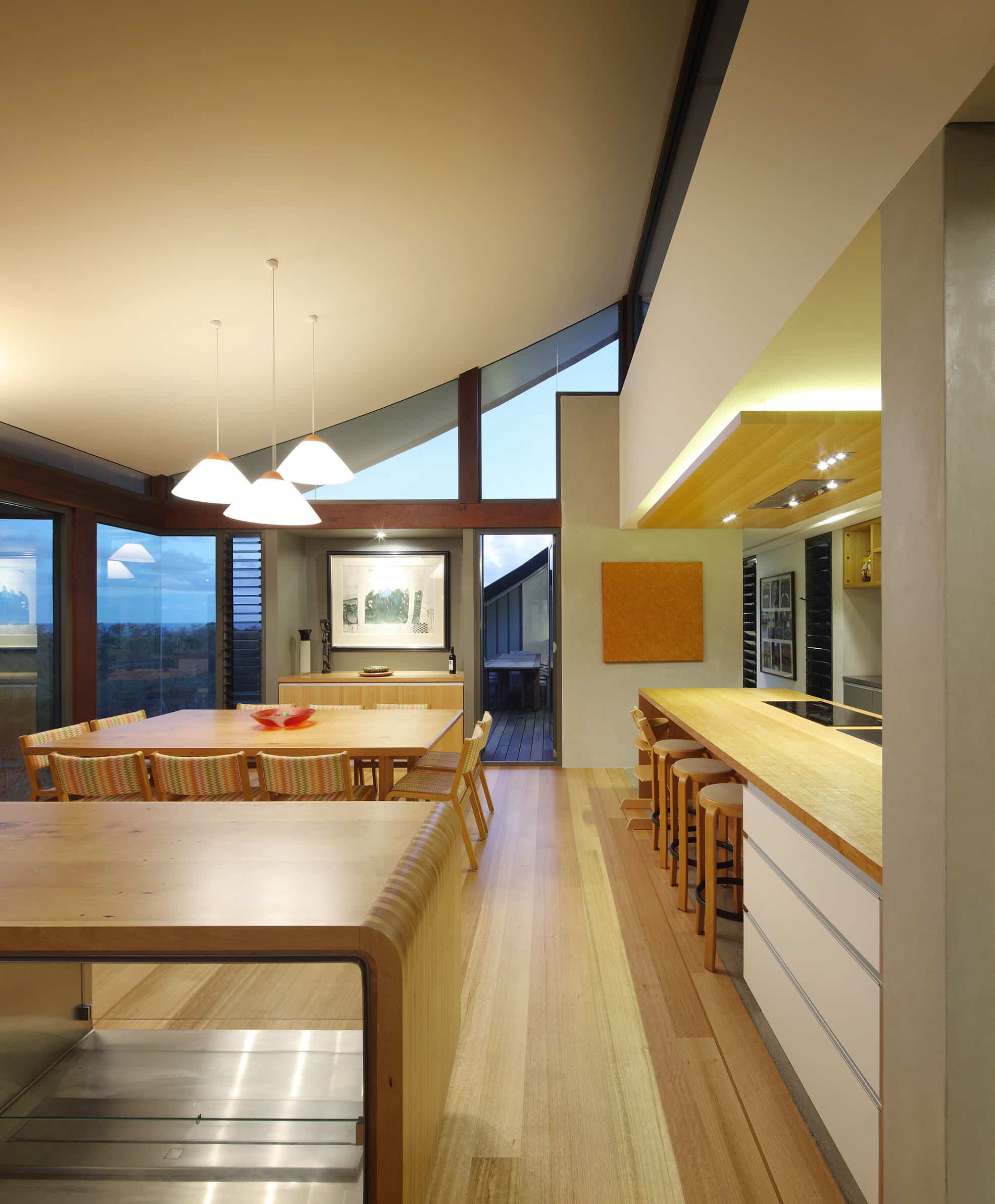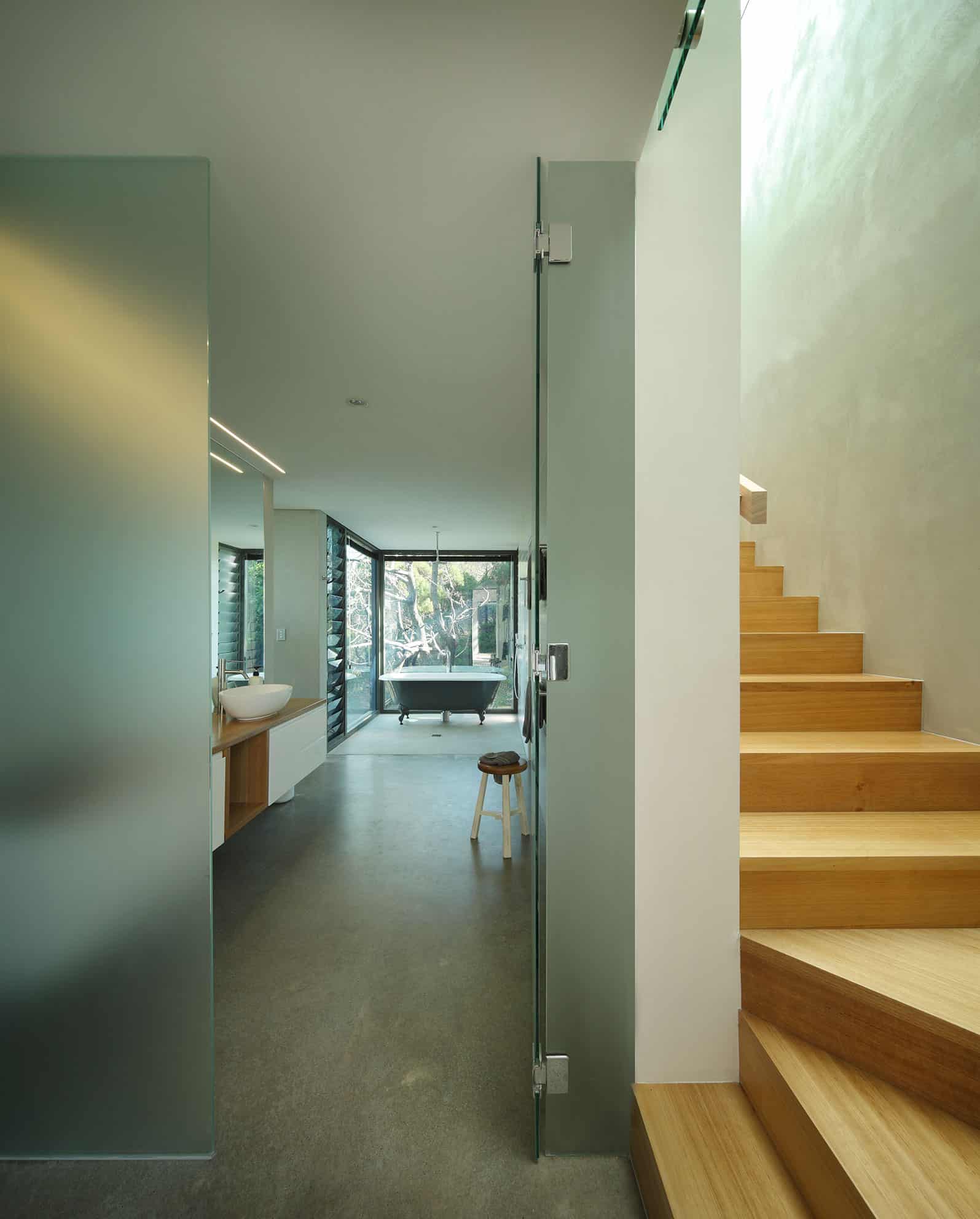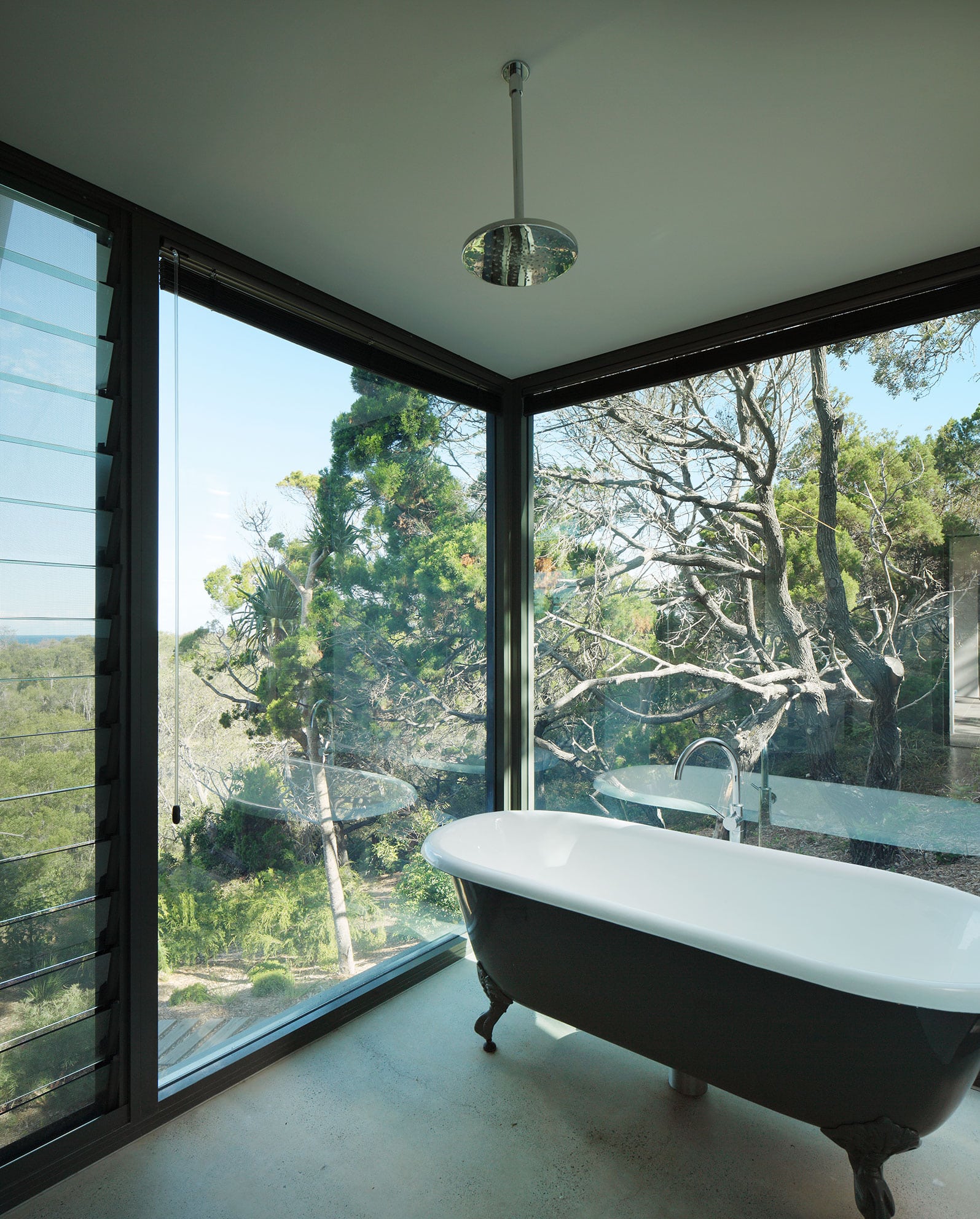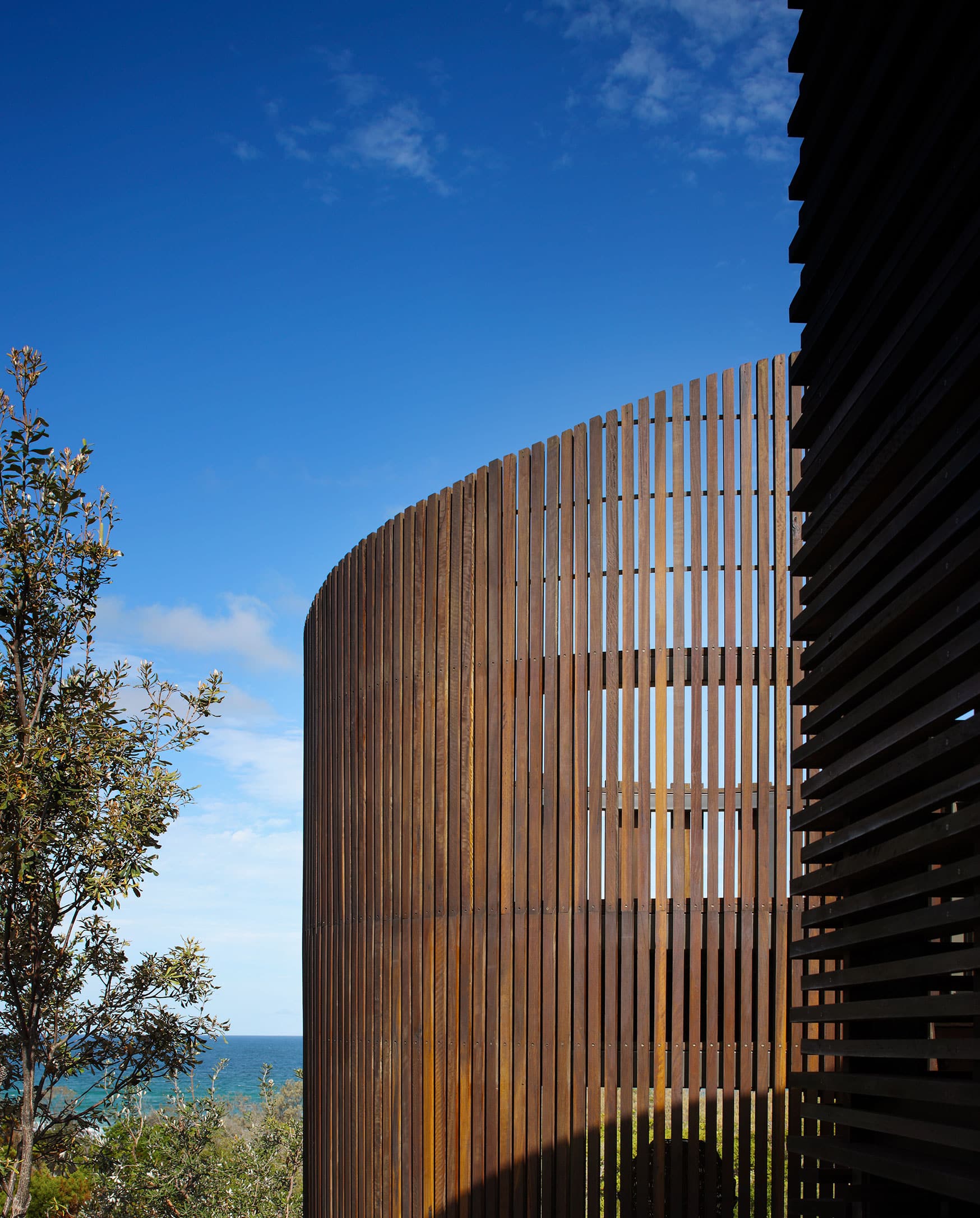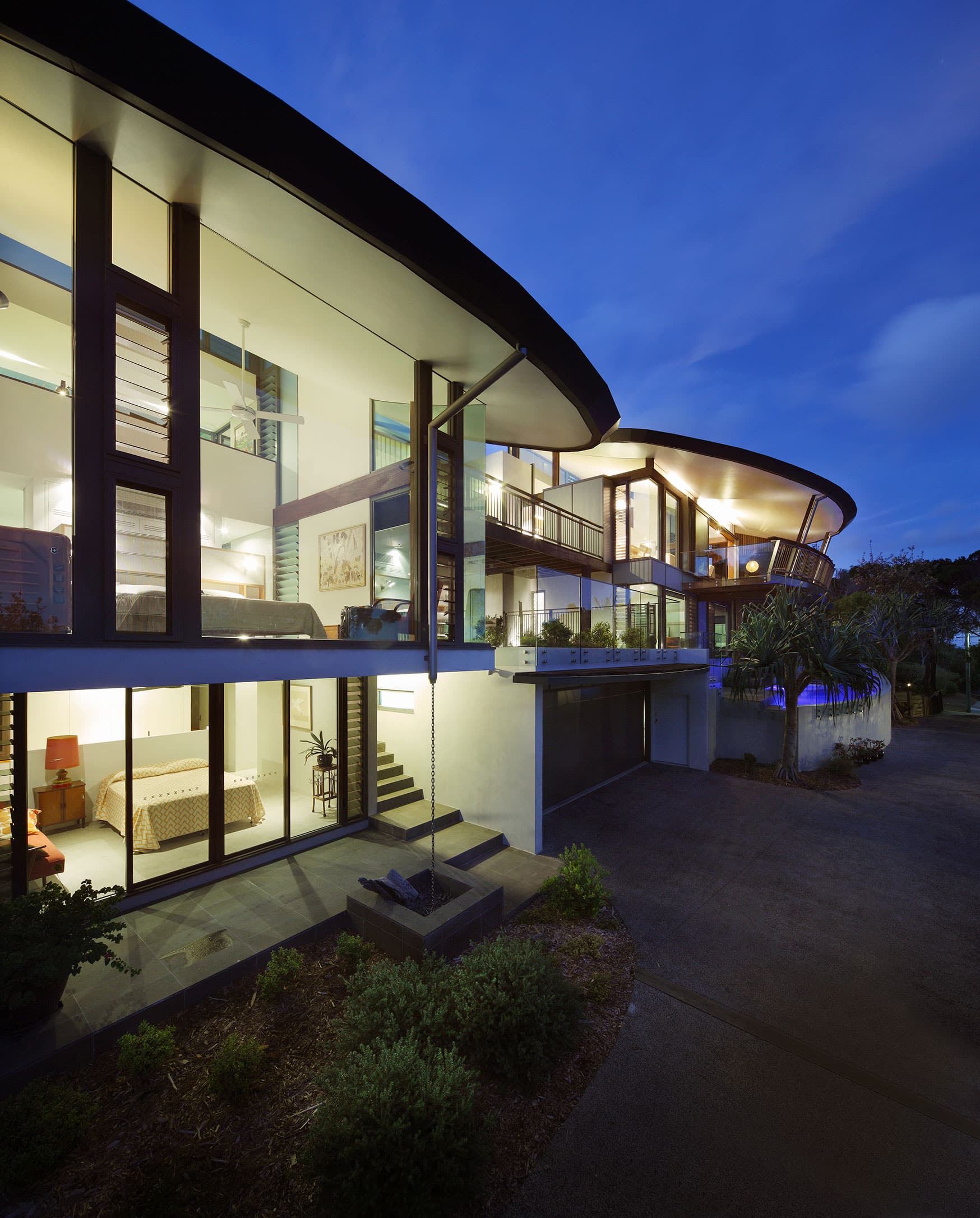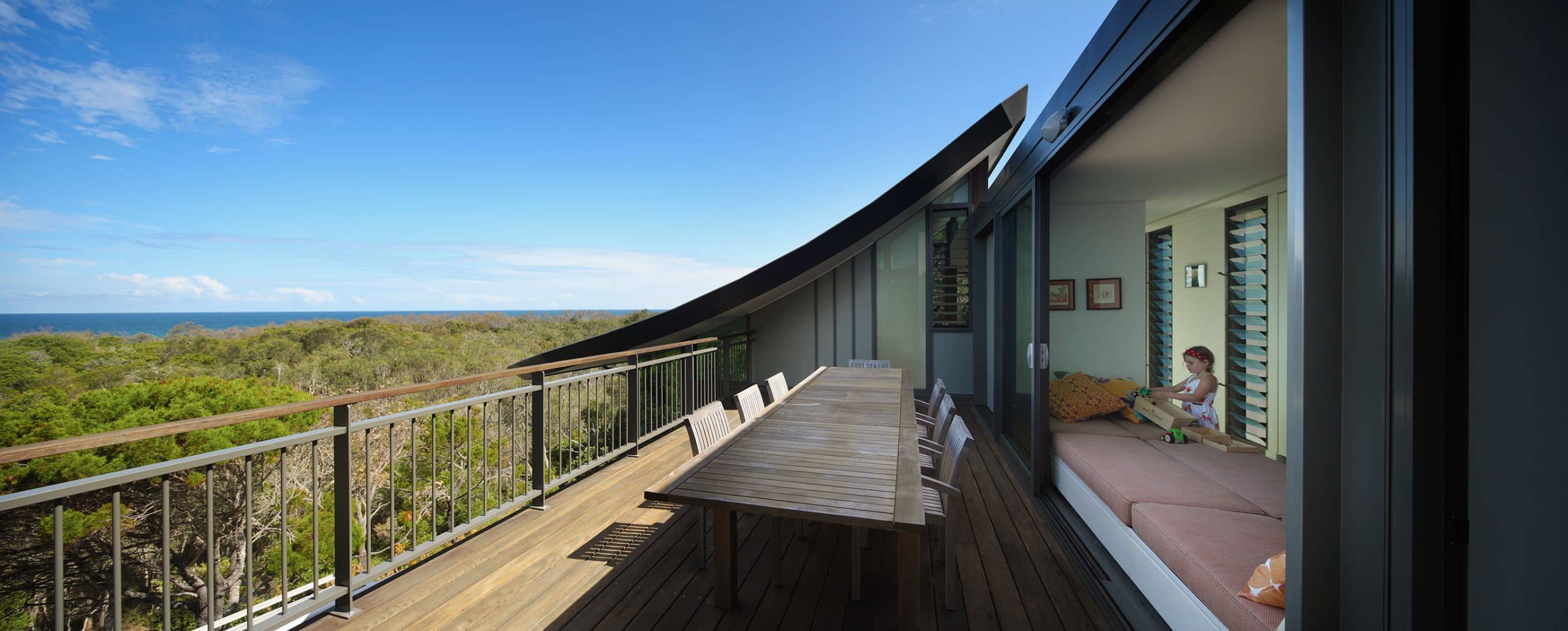The house is positioned on the eastern face of a coastal dune, tucked in behind the Peregian ‘Duck Pond’. The beauty of the site very much drove the aesthetic of the building. It enjoys views of the entire length of the coast, an expanse of nature to the east and to the west the ‘boxy’ forms of other beach houses. In a way the house forms a dialogue between the two – the sweeping roof forms and decks playing with the landscape of ocean and dunes and the more orthogonal circulation spine and stair ‘towers’ referencing the built environment to the west.
Although it is a large home the spaces have an intimacy and warmth and also, perhaps contradictory to it’s dynamic form, a relaxed and casual feel. Having known the owners for many years there was also an opportunity to reference materials, ideas and memories that were important to them. To move through the house is very much a journey through the site.
The dimensions of the site are quite unusual as the length runs from the north to the south rather than east west which is the usual planning pattern for this area (maximising ocean view properties). We therefore had the opportunity for all spaces to engage with the eastern view. However the nature of the site offered a far richer experience than simply the ‘big ocean view’.
The lower levels are tucked in behind the vegetation and very much engage with the undercroft of the banksias and melalukas and the wildlife of the pond. As you move up through the building this changes, from looking through the canopy, then over it and finally, when you reach the ‘look out nest’ you experience the entire stretch of the Sunshine Coast.
Simply put, the planning of the house is a series of viewing platforms, stretched along the length of the site and stacked through the various vertical layers of vegetation. The house has been designed for passive ventilation and day lighting. There is no mechanical air conditioning! It has a 90 000l rainwater tank and 5kw photovoltaic array. All of the expressed hardwood in the building is from recycled wharf timber and the two key items of furniture in the primary living space, the fireplace / media cabinet and the dining table are built from recycled Queensland Beech, sourced from the floor of an old shed on the owners previous property.
For me, the houses poetry lies in how it engages with it’s site in many different ways through a myriad of viewing options and patterns of movement through the building, the relationship of space and mass and the careful selection of materials and colours to compliment the surrounding coastal scrub.

